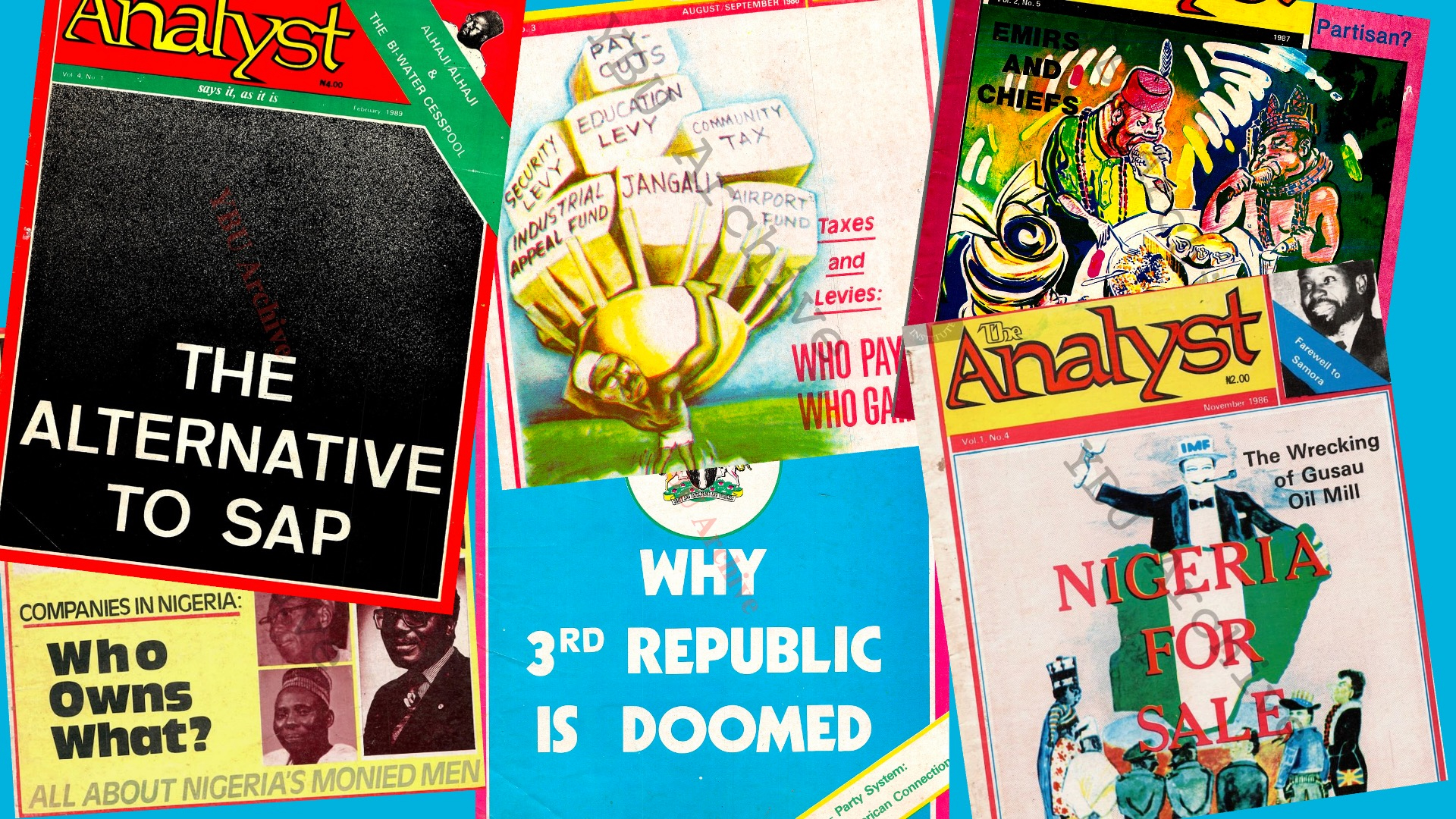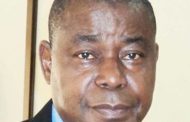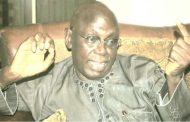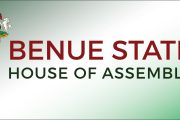Intervention republishes below a piece originally titled “We are Producing, They are Eating” in Africa Is A Country where it was originally published on a creative commons terms. It has been retitled to capture the logic or the imperative of renewal to which it speaks. Africa Is A Country prefaces the piece as follows: Nigeria’s archives of revolutionary printmaking offers us insights into the dissident voices of the country’s old left, which are surprisingly relevant today.
Nigeria does not typically figure prominently in the global history of anticolonial radicalism, leftist revolutionary movements, or Pan-African solidarity. Nor is this entirely unfair. Nigerian independence leaders, including Nnamdi Azikiwe and especially Abubakar Tafawa Balewa, provided some of the staunchest opposition to Nkrumah’s proposals for an Africa-wide political union.

Capturing the ideological direction and corresponding accumulative instinct as it was then and even now!
Likewise, while maintaining an official posture of “non-alignment” amid the Cold War, the first generation of Nigeria’s post-independence leaders was largely (though not exclusively) drawn from a wealthier aristocratic or business milieu, and many saw a Western capitalist inclination as more in tune with their interests than the Soviet path. As Nigeria’s first prime minister famously asserted, “We shall use every means in our power to prevent the infiltration of communism and communist ideas into Nigeria.” The rise to power of more Afrocentric military regimes in the 1970s and ’80s did see Nigeria offer various levels of support to Southern African liberation movements. Yet this solidarity was anchored more so in the same commitment to national sovereignty on the African continent that undergirded Nigeria’s opposition to continental union than in any desire to challenge the neocolonial nation-state system or other Western-dominated political and economic institutions.
At the same time, while such “cautious” (read “conservative”) ideological positions were maintained by ruling parties and most military regimes at the national level, this did not entirely foreclose debate about alternative economic and political paths for the country, the African continent, or the planet. Instead, regionally based opposition parties, dissident collectives of students and academics on university campuses, and radical labor unions and cooperative movements provided laboratories for debating, planning, and enacting radical new visions for organizing society—including through revolutionary printmaking.
The Analyst, a periodical founded in 1986 and published until the end of the decade, provides one fascinating example of such radical print experiments. Fortunately, several out-of-print editions of the magazine have recently been made available online thanks to the Yusufu Bala Usman Institute in Kaduna, Nigeria, and the “Archives of Nigerian Radicalism“—a wider initiative, spearheaded by the Centre for Democracy and Development (CDD), to digitize Nigeria’s heritage of radical pro-democracy activism.

(As in the original) Front cover of a volume of the hausa language edition Fitila. “Gurguzu Daular Talakawa” roughly translates to “Communism is the Empire of the Poor”
The stakes of The Analyst’s intervention were clearly established in the opening pages of its first volume, published in June 1986, in which the magazine clarified that it would “complement and further develop” a nascent “proletarian media,” seeking to promote the interests of “the workers, peasants, artisans, petty producers and traders, and the revolutionary and progressive intellectuals and professionals.” While various scholarly journals attempting to understand Nigerian and African realities in relation to Marxist theoretical constructs sprung up mainly on university campuses around the same period, The Analyst distinguished itself by pursuing a highly accessible mass-circulation magazine format, seeking to assess local and international current events through class and anti-imperialist lenses. Its desire to put class analysis into popular idiom is evident in its frequent valorization of the popular Hausa saying among Nigerian workers: “muna yi, suna ci,” meaning “we are producing, they are eating.”
In addition to riding on the distribution channels of mainstream newspapers such as the Daily Trust and New Nigerian, the magazine was, at least for a time, able to secure some advertising revenue from an interesting array of businesses, including the regional Jos International Brewing Limited, brewers of the iconic Rock Beer.
Entitled Who Owns What?, the magazine’s inaugural volume boldly sought to unmask various “tiers” of Nigeria’s ruling classes, tracing the origins of key “monied-men” as a step towards “exposing the real class origins and interests of all activities in Nigeria.” But as stated in its “message from the publisher,” The Analyst’s horizons would “by no means be limited to the Nigerian scene.” Instead the magazine ambitiously sought to profile issues of concern across Africa and the rest of the world, “especially where the struggle between imperialism and the people is sharpest.” Naturally, this entailed a concern with Southern African liberation movements, but also featured a special “interest in the struggles of the peoples of the Caribbean, Central and South America,” as well as “the struggles of Palestinians, and other Middle Eastern peoples against imperialism, zionism and local reactionaries.”

(As in the original) Advertisement page for the iconic Rock Beer, a symbol of a bygone era of regional economic production in Nigeria
This Pan-Africanist and internationalist stance was also put into practice, with moderate success, in the roster of authors who published in the magazine. International contributors included Ugandan scholar Peter Kazenga Tibenderana, Mbulelo Mzamane (whom Mandela described as one of South Africa’s greatest intellectuals), and foreign radical intellectuals based in Nigeria, such as Norma Perchonock and Okello Oculi.
Though many of its local contributors were based in northern Nigerian universities, the magazine drew from a wider pan-Nigerian network of radical intellectuals including Odia Ofeimun, Herbert Ekwe-Ekwe, and Iyorchia Ayu (who, intriguingly, was later to become the chair of Nigeria’s avowedly capitalist People’s Democratic Party).
In addition to an ideological commitment to a class-based analysis of domestic politics and an anti-imperialist outlook internationally, many of the Nigerian contributors also shared in common a partisan affiliation to the radical populist People’s Redemption Party (PRP), which built popular support and gained control of state governorships in Kano and Kaduna states during Nigeria’s short-lived Second Republic (1979–1983). In fact, Abdulkadir Balarabe Musa—the magazine’s publisher—had served as governor of Kaduna state on the platform of the PRP before his controversial impeachment by a right-wing-dominated state assembly. This political affiliation lent a constructive aspect to the magazine’s critical stance. For instance, its scathing excoriation of the Structural Adjustment Programs (see vol. 4, nos. 1 and 2), which officially commenced in Nigeria in 1986, was also accompanied by an alternative proposal—termed the National Economic Reconstruction Programme (NERP), summarized in vol. 4, no. 1—aimed at resolving Nigeria’s spiraling debt profile and stagnant economy without recourse to the extant austerity program. Other ambitious issues of policy advocacy pursued by the magazine include a campaign to abolish the state-supported chieftaincies and traditional aristocracies (vol. 2, no. 5), and to end regressive taxes on peasant producers (vol. 1, no. 3).

Mentioned in the piece!
Despite—and partially due to—such bold aims, The Analyst confronted a number of contradictions, which ultimately contributed to its demise. Despite the vaulted ambition expressed repeatedly in early volumes for the “working masses” to “speak for themselves in their own language through The Analyst,” the magazine faced inevitable constraints trying to reach the wider population of nonliterate non-English speakers while operating an anglophone print medium. In recognition of this, the publishers succeeded in developing a Hausa version of the magazine—entitled Fitila (Lantern), which for a time was able to reach a literate Hausa audience.
More devastating for the magazine’s longevity, however, was the fact that its highly critical stance and sharp class analysis put the magazine at frequent loggerheads with potential advertisers. Indeed, following its first edition, the magazine was faced with the threat of a libel suit by the the Nigerian subsidiary of the United Africa Company (UAC), which the magazine had taken to the cleaners for its century-long exploitation of the Nigerian economy and links to the Royal Niger Company, which aided the British colonization of Nigeria. The magazine partially sought to alleviate this challenge—of opposing big capitalist players while depending on advertising revenue—by appealing to the interests of smaller-scale producers and the “small fish” of minority shareholders. However, the difficulties in sustaining the publication into the 1990s suggest that these efforts met with limited success.
Nevertheless, The Analyst remains an important archive of contesting capitalism in Nigeria and testament to the flowering of radical intellectualism and anticolonial resistance in one of Africa’s least favorable contexts, at least ideologically speaking. That it was to inspire similar projects after its demise—including an attempted revival in the 1990s known as Analysis and the contemporary online site Intervention—attests to its historical and lingering importance.
About the Author
Sa’eed Husaini is research fellow at the Center for Democracy and Development in Abuja, Nigeria, and a regional editor for Africa Is a Country.





























1 Comments
Ismail Misbahu
Thank you very much for this wonderful and very excellent work! Highly appreciated. All the links provided here are helpful.